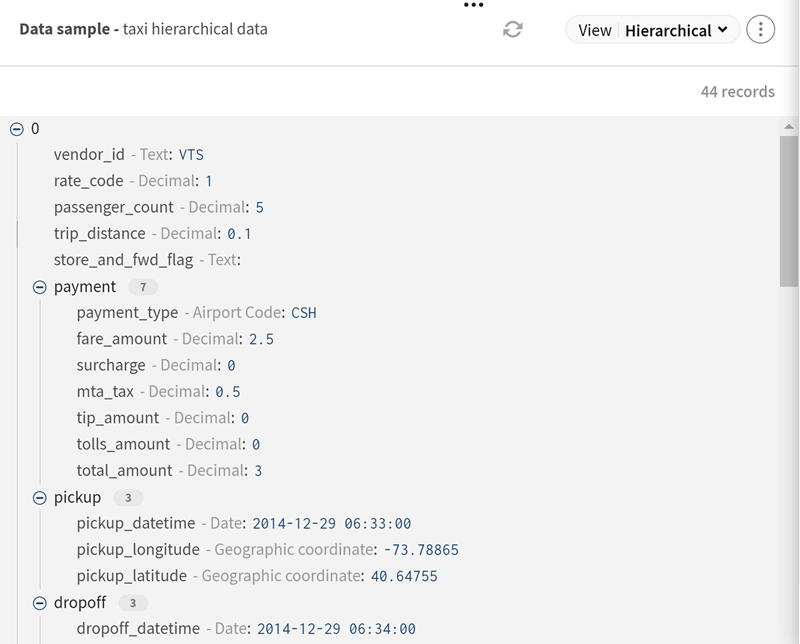Processing strings to get the revenue corresponding to small taxi rides

Before you begin
-
You have previously created a connection to the system storing your source data.
-
You have previously added the dataset holding your source data.
Here, hierarchical taxi data including pickup time, dropoff time, fare, etc. (download the type_converter-taxi.json file from the Downloads tab in the left panel of this page).
-
You also have created the connection and the related dataset that will hold the processed data.
Here, a file stored on HDFS.
Procedure
Results
Your pipeline is being executed, the field types are converted and filtered, and the output flow is sent to the target system you have indicated.
Did this page help you?
If you find any issues with this page or its content – a typo, a missing step, or a technical error – let us know how we can improve!




